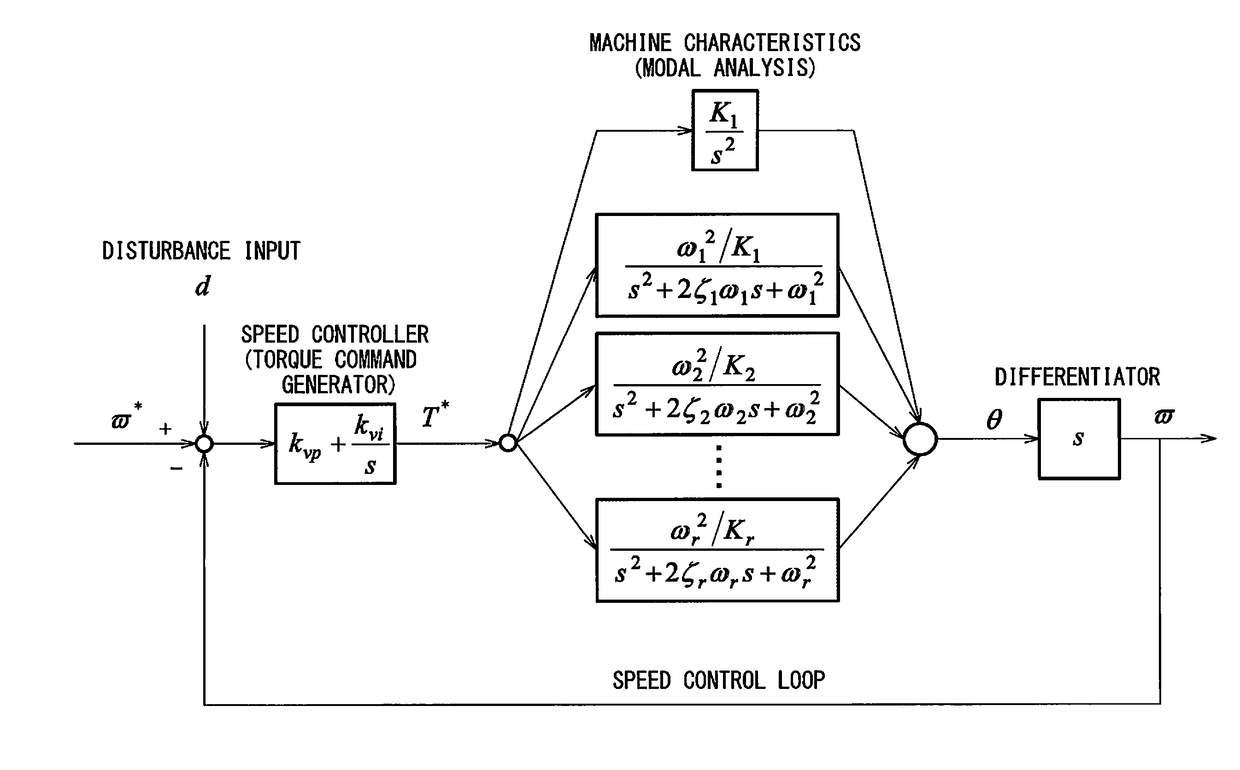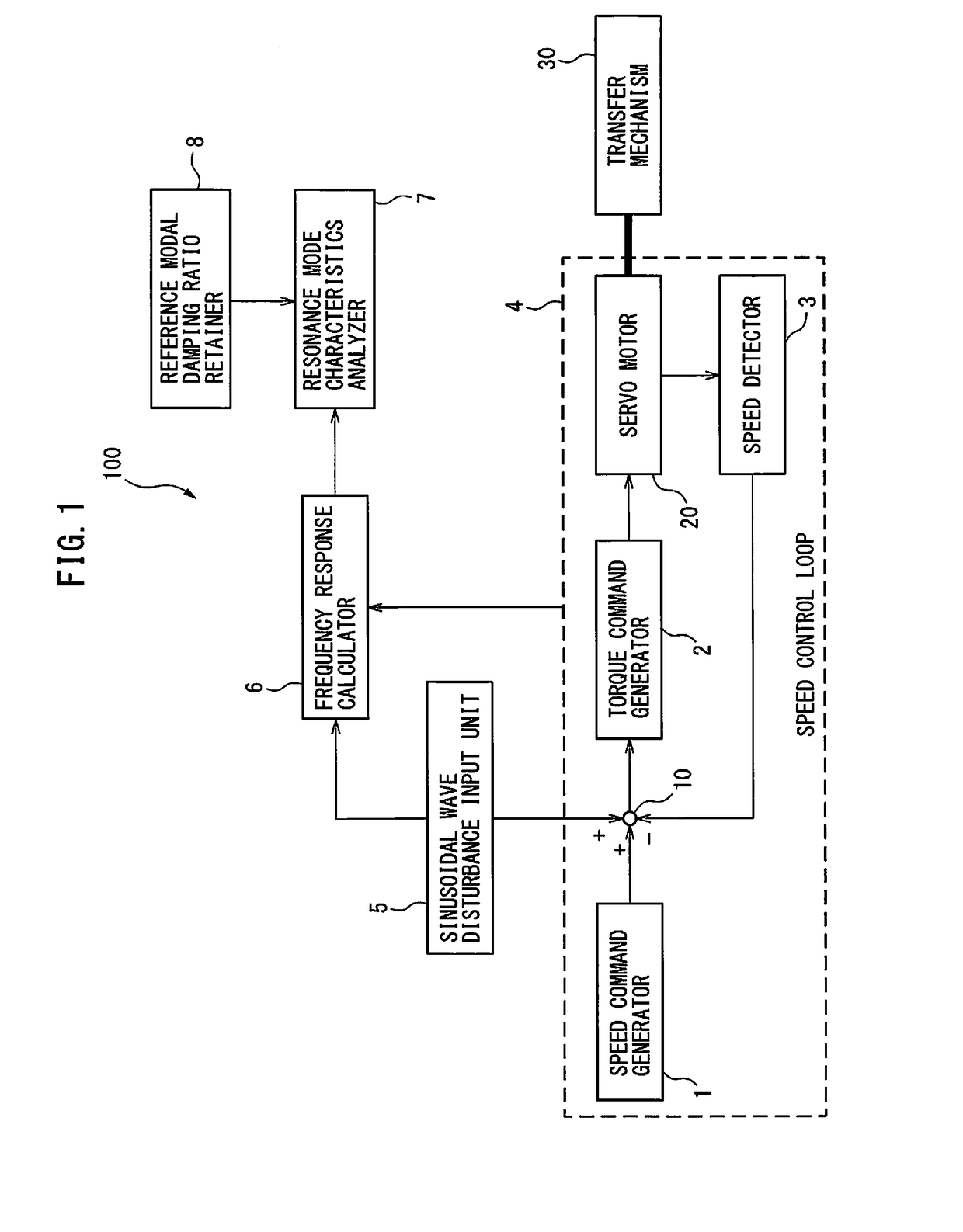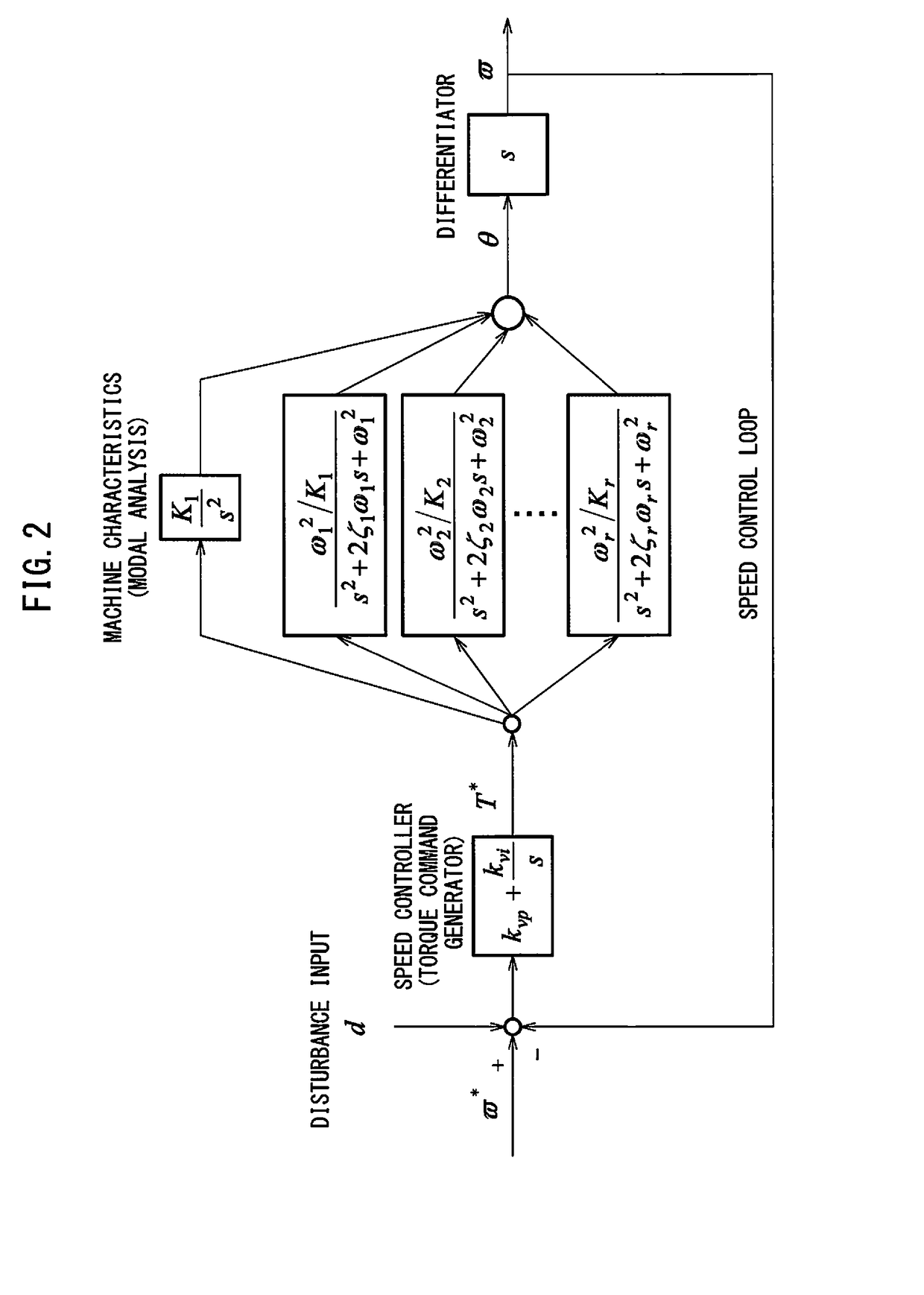Servo controller for measuring lubrication characteristics of a machine by experimental modal analysis
a technology of experimental modal analysis and lubrication characteristics, which is applied in the direction of electric controllers, dynamo-electric converter control, instruments, etc., can solve the problems of generating chattering vibration and affecting the operation performance of the feed axis
- Summary
- Abstract
- Description
- Claims
- Application Information
AI Technical Summary
Benefits of technology
Problems solved by technology
Method used
Image
Examples
first embodiment
[0023]To begin with, a servo controller according to the first embodiment of the present invention will be described. FIG. 1 shows a block diagram of the servo controller according to the first embodiment of the present invention. The servo controller 100 according to the first embodiment of the present invention is to be used to control a servo motor for driving a feed axis provided for a machine tool, and includes: a speed command generator 1 for generating a speed command value for a servo motor 20; a torque command generator 2 for generating a torque command value for the servo motor on the basis of the speed command value; a speed detector 3 for detecting the speed of the servo motor driven on the basis of the torque command value; a sinusoidal wave disturbance input unit 5 for supplying a sinusoidal wave disturbance to a speed control loop 4 including the speed command generator 1, the torque command generator 2 and the speed detector 3; a frequency response calculator 6 for e...
second embodiment
[0033]Next, a servo controller according to the second embodiment of the present invention will be described. The servo controller of the second embodiment of the present invention is characterized in that the resonance mode characteristics analyzer 7 evaluates the degree of relative lowering of the lubricating condition by determining the relative ratio between the reference modal damping ratio and the measured modal damping ratio. The other configurations are the same as those in the servo control apparatus according to the first embodiment, and therefore a detailed description is omitted.
[0034]For example, the resonance modal damping ratio at a particular frequency at the time of production is set as a reference. When the frequency response of speed control is periodically measured, the modal damping ratio decreases with time. In this case, measurement may be performed with the amplitude of excitation force made smaller. This is because if strong excitation force is applied, disp...
third embodiment
[0039]Next, a servo controller according to the third embodiment of the present invention will be described. The servo control apparatus according to the third embodiment of the present invention is characterized in that when the measured modal damping ratio relative to the reference modal damping ratio is lower than a threshold, the resonance mode characteristics analyzer 7 warns of degradation in lubricating condition in order to demonstrate the necessity of inspection of the lubricating condition. The other configurations are the same as those in the servo control apparatus according to the first embodiment, so a detailed description is omitted.
[0040]FIG. 7 is a graph showing the relationship between the time-dependence of the measured mode resonance ratio / the reference modal damping ratio and a warning level threshold. When the modal damping ratio has excessively lowered and become 50% of the reference modal damping ratio, for example at time t4 for a certain measurement, a warn...
PUM
 Login to View More
Login to View More Abstract
Description
Claims
Application Information
 Login to View More
Login to View More - R&D
- Intellectual Property
- Life Sciences
- Materials
- Tech Scout
- Unparalleled Data Quality
- Higher Quality Content
- 60% Fewer Hallucinations
Browse by: Latest US Patents, China's latest patents, Technical Efficacy Thesaurus, Application Domain, Technology Topic, Popular Technical Reports.
© 2025 PatSnap. All rights reserved.Legal|Privacy policy|Modern Slavery Act Transparency Statement|Sitemap|About US| Contact US: help@patsnap.com



